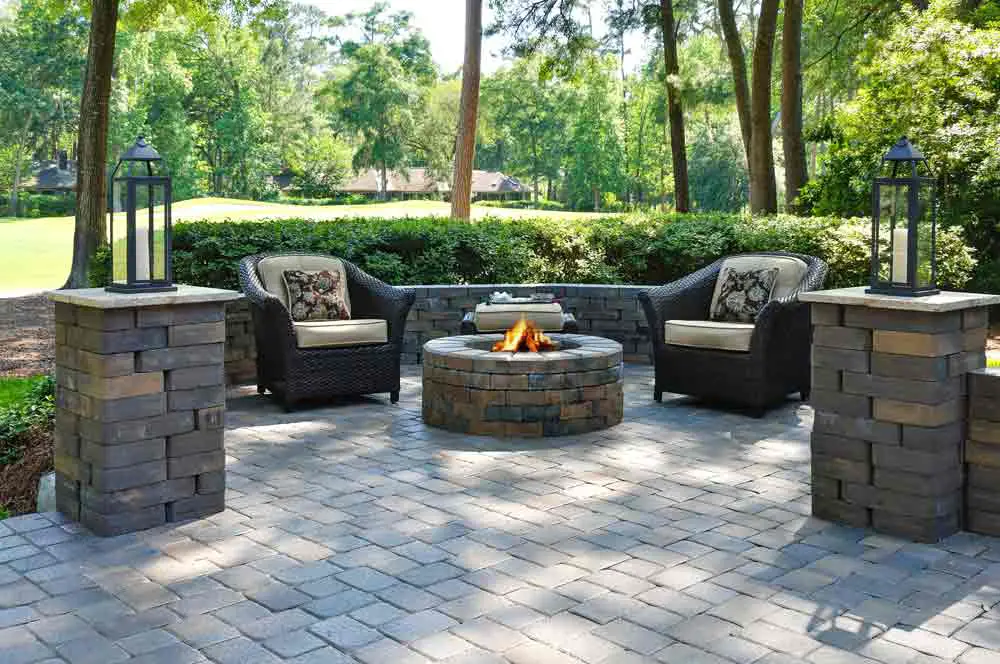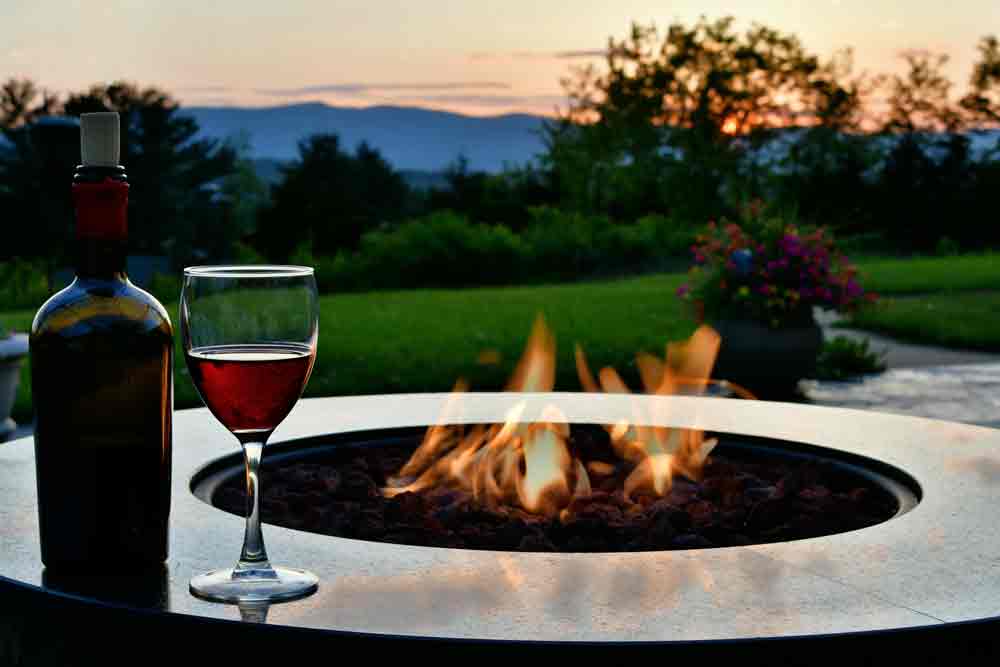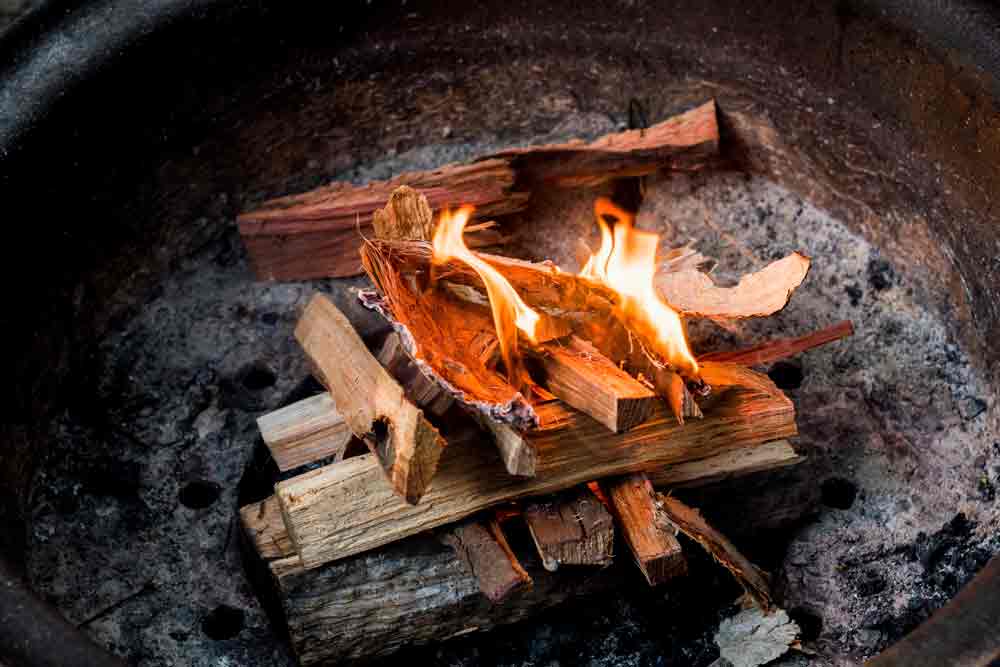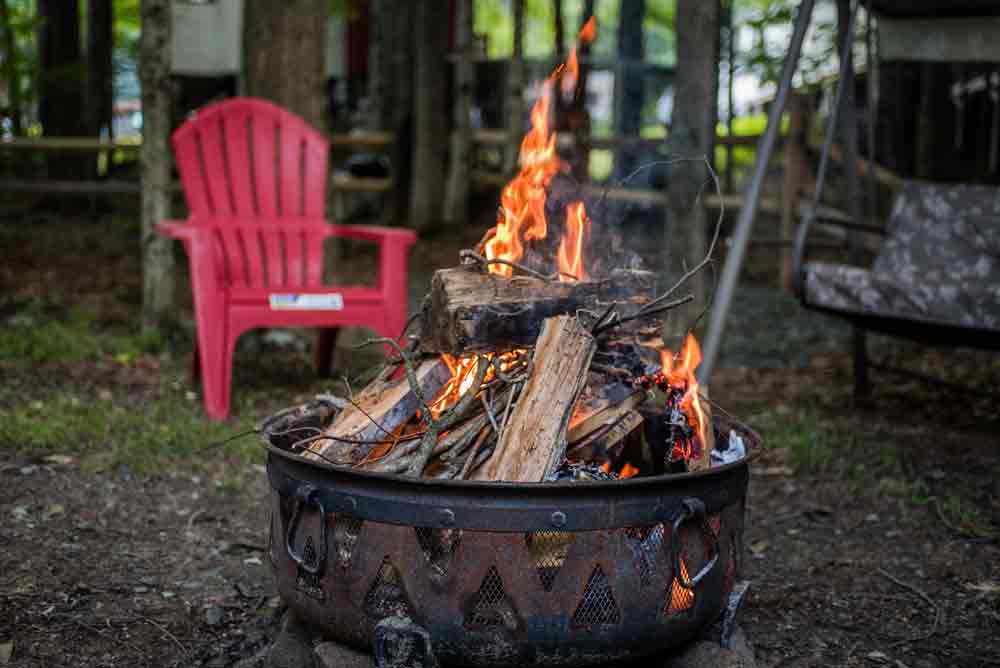The simple answer is yes! Fire pits generate a lot of heat, and having air vents allows for proper ventilation to help control and disperse the flame. They also help ensure that smoke does not become trapped and excess fuel is not added, which can be dangerous and could lead to a fire. Careful placement of the vents also helps distribute oxygen throughout the pit so that it burns more efficiently. Also, keeping the area around your fire pit free from obstructions will help maximize the effectiveness of your air vents.
What Is an Air Vent?
An air vent is an opening in a structure that allows air to flow freely in and out of the space. In the case of fire pits, they are essential because they provide proper ventilation to help disperse heat and smoke safely. Air vents also offer an efficient way for oxygen to reach the fire, allowing it to burn more efficiently.
Why Do Fire Pits Need Air Vents?
Fire pits need air vents to ensure adequate ventilation, so smoke and hot gases can escape safely. Without proper airflow, smoke and gases will become trapped in the area, creating a hazardous environment. Additionally, it will be easier for the fire to burn efficiently with sufficient oxygen, posing a safety risk.
The Benefits of Having Air Vents for Your Fire Pit
Air vents for your fire pit are essential to its safety and efficiency. By providing proper ventilation, smoke and hot gases can escape safely, reducing the risk of fire hazards. Additionally, air vents will allow enough oxygen to reach the fuel source so the fire can burn efficiently. Not only that, but having proper air vents can also help protect your outdoor space by preventing smoke and toxic fumes from spreading around or entering the area.
The Dangers of Not Having Proper Air Ventilation
Proper air ventilation for your fire pit can be safe for you and your outdoor space. Without adequate ventilation, smoke and hot gases can become trapped in the area, creating an unhealthy environment that puts you at risk of respiratory problems or other health issues. Additionally, inadequate oxygen flow will lower the efficiency of the fire, increasing the chance of a fire hazard occurring. Keeping air vents open ensures your safety while using fire pits.
How to Install an Air Vent for Your Fire Pit
Installing an air vent for your fire pit is essential for maintaining the safety and efficiency of your outdoor space. Here’s a step-by-step guide to making sure you get it right.
- Inspecting the Fire Pit: Before you start, please ensure that the fire pit is in good condition and there are no broken parts or pieces missing.
- Choosing a Ventilation Solution: Decide on which type of ventilation solution is best for your fire pit — whether it’s an intake vent to bring oxygen into the combustion area or an exhaust vent to remove hot gases.
- Cutting the Hole for Your Vent: Carefully measure and mark where you plan to cut a hole, then use a reciprocating saw or drill bit to cut through any brick or stone.
- Installing the Vent: Install an intake or exhaust vent depending on what type of ventilation you need, then attach it with masonry screws or nails. Make sure it’s securely attached to prevent any leaks or other issues.
- Testing Your Work: Run a test by lighting a small fire in the fire pit and confirming that smoke escapes from the installed new vent.
Finally, regularly clean and inspect your air vents to ensure they are free of debris, dust, and another buildup that could interfere with proper airflow. With these steps, you can have safe and efficient fires in no time!
Where to Place Your Fire Pit’s Air Vents
Placing your fire pit’s air vents correctly is essential for safety and efficiency. Ideally, the air vents should be installed near the bottom of the fire pit and positioned on opposite sides of each other.
This ensures that oxygen can enter and hot gases can escape from either side, allowing for a steady flow of air to keep your fire burning firmly and safely. Additionally, if you choose to install an intake vent for your fire pit, it should be placed lower than the exhaust vent to ensure that oxygen flows in from underneath. Remember that ventilation requirements vary depending on your specific setup, so always consult the manufacturer’s instructions or speak with a professional before beginning installation. Proper placement of your fire pit’s air vents allows you to enjoy safe and efficient fires!
Tips for Maintaining Optimal Air Ventilation Around Your Fire Pit
Maintaining optimal air ventilation around your fire pit is essential for safety and efficiency. Here are a few tips you can use to ensure your fire pit is ventilated correctly each time you light it.
Check the Vents Regularly: Make sure to clean your air vents regularly, as debris or build-up can restrict airflow and increase the chances of the fire flaring up.
Pay Attention to Weather: Adjust your vents based on weather conditions, especially if there is windy or rainy weather that could impact airflow.
Consider Adding an Intake Vent: If you don’t have an intake vent, consider adding one to increase circulation and ensure oxygen gets into the combustion area more easily.
By following these tips and using the correct type of ventilation solution for your needs, you can enjoy safe fires each time you light up your fire pit!
Common Mistakes when Installing and Using Outdoor Fire Pits with An Air Vent
Installing and using a fire pit with an air vent requires knowledge and forethought, as even the slightest misstep can have serious consequences. Here are some of the most common mistakes people make when installing and using a fire pit with an air vent:
- Not Following Instructions: Read the manufacturer’s instructions carefully before beginning any installation or maintenance process, as failure can lead to improper ventilation and safety concerns.
- Overlooking Ventilation Requirements: Different fire pits will require different ventilation solutions depending on size, location, and other factors. Please research ahead of time to ensure you get the correct type of air vents for your needs.
- Using the Wrong Materials: Using non-fireproof materials such as plastic or wood near your fire pit is a significant no-no; only use materials tested for fire resistance to stay safe.
- Not Cleaning Vents: Be sure to clean your air vents regularly, as debris or build-up can restrict airflow and increase the chances of flare-ups.
By following these tips and taking care when installing and using a fire pit with an air vent, you can enjoy safe and efficient fires each time!
How Do You Vent a Fire Pit?
Vents are essential to fire pits, as they allow for proper airflow and keep the flames burning efficiently. To install a vent system in your fire pit, first, you need to measure the dimensions of your fire pit and then purchase the right size of air vents accordingly. Next, attach the ducts to the exterior wall edges, where they will draw fresh air into the fire pit. Finally, check your vents regularly for debris or build-up that could restrict airflow and affect performance. These steps should help ensure your fire pit is vented correctly each time you light it!
Where Should Fire Pit Vents Be Placed?
Fire pit vents should be placed on the exterior walls of the fire pit, as this is where the air will typically enter or exit. You may need to install multiple vents depending on the size and shape of your fire pit, but generally speaking, you want to place them near the bottom and sides for optimal airflow. Please also check the instructions from the manufacturer if you have any specific vent requirements.
Do I Need a Wind Guard for My Fire Pit?
A wind guard may be beneficial depending on your location and the type of fire pit you have. Wind guards help to create a barrier between the flame and strong winds that can blow out the fire or cause it to flare up dangerously. When in doubt, check with the manufacturer’s recommendations before deciding if a wind guard is necessary for your fire pit.
Conclusion
Fire pits are a great way to enjoy cozy or romantic nights outdoors, but it’s essential to ensure that you have the proper air vents in place for optimal performance and safety. Following the tips outlined above and taking care when installing and using your fire pit, you can ensure you get the most out of your experience. With suitable air vents in place and the proper preparations for your needs, you can enjoy safe fires each time you light up your fire pit!








